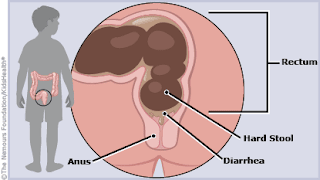Analysis of Hypoallergenic Cow's Milk Formulas
Analysis of Hypoallergenic Cow's Milk Formulas
During their first year of life, 2% to 3% of children develop hypersensitivity to cow's milk.
Hypoallergenic formulas have considerable variation in their biochemical and immunologic characteristics.
The "degree of hypoallergenicity" can be measured with:
- sodium dodecyl sulfate polyacrylamide gel electrophoresis (SDS-PAGE)
- mass spectrometry
- immunoglobulin (Ig)E reactivity
A recent study (see reference section below) investigated 16 cow's milk formulas to determine their allergenic activity.
The amino acid formulations showed the lowest IgE-binding activity, low T-cell reactivity, and low allergenic activity.
Only 3-5% of children who are allergic to cow's milk are allergic to the extensively hydrolyzed formula.
However, partially hydrolyzed formulas have larger peptides and can cause allergy.
"A person who is truly allergic to cow's milk or milk formula has to go to extensively hydrolyzed formula (EHFs), and probably more than 95% of the formula on the market would be tolerated well. "If it's not tolerated, then they go to amino acid formulas," adds Dr. Bahna, president of the ACAAI.
"The majority of cow's-milk-allergic children would tolerate soy formula, which is similar in price. If a person is highly allergic, we may have to go to the very expensive or the amino acid formulas."
30-50% of infants allergic to cow milk protein will also be allergic to soy protein. These infants should be given protein hydrolysate formula. 5% of infants with hypersensitivity to cow milk formula will also react to hydrolysate formula (EHFs) and will require elemental formula.
Hydrolysate formulas (EHFs) are enzymatically hydrolyzed and contain charcoal-treated casein or whey. Whey or "milk plasma" is the liquid remaining after milk has been curdled and strained.
Extensively hydrolyzed casein protein formulas (EHFs)
Alimentum Similac (Abbott)
Nutramigen LIPIL (Mead Johnson)
Pregestimil LIPIL (Mead Johnson)
Amino acid based formulas (AA)
Neocate Infant (Nutricia)
EleCare Infant (Abbott)
Nutramigen AA Enfamil LIPIL (Mead Johnson)
Note: All Mead Johnson formulas have LIPIL as part of their name.
References:
Study Analyzes "Hypoallergenic" Cow's Milk Formulas for Allergenic Activity. Medscape Medical News, 2009.
Any formula use in the first 6 months of life is associated with increased incidence of otitis media http://goo.gl/LAEJ
Hydrolyzed milk formula may decrease diabetes-associated autoantibodies in infants http://goo.gl/vCXai
Image source: Wikipedia, GNU Free Documentation License.
Related from Amazon:
You might also like:
Children with milk allergy tolerate heated milk
When to re-introduce cow milk in milk-allergic children? ...
How to predict who will "outgrow" food allergy to cow's ...
LinkWithin
During their first year of life, 2% to 3% of children develop hypersensitivity to cow's milk.
Hypoallergenic formulas have considerable variation in their biochemical and immunologic characteristics.
The "degree of hypoallergenicity" can be measured with:
- sodium dodecyl sulfate polyacrylamide gel electrophoresis (SDS-PAGE)
- mass spectrometry
- immunoglobulin (Ig)E reactivity
A recent study (see reference section below) investigated 16 cow's milk formulas to determine their allergenic activity.
The amino acid formulations showed the lowest IgE-binding activity, low T-cell reactivity, and low allergenic activity.
Only 3-5% of children who are allergic to cow's milk are allergic to the extensively hydrolyzed formula.
However, partially hydrolyzed formulas have larger peptides and can cause allergy.
"A person who is truly allergic to cow's milk or milk formula has to go to extensively hydrolyzed formula (EHFs), and probably more than 95% of the formula on the market would be tolerated well. "If it's not tolerated, then they go to amino acid formulas," adds Dr. Bahna, president of the ACAAI.
"The majority of cow's-milk-allergic children would tolerate soy formula, which is similar in price. If a person is highly allergic, we may have to go to the very expensive or the amino acid formulas."
30-50% of infants allergic to cow milk protein will also be allergic to soy protein. These infants should be given protein hydrolysate formula. 5% of infants with hypersensitivity to cow milk formula will also react to hydrolysate formula (EHFs) and will require elemental formula.
Hydrolysate formulas (EHFs) are enzymatically hydrolyzed and contain charcoal-treated casein or whey. Whey or "milk plasma" is the liquid remaining after milk has been curdled and strained.
Extensively hydrolyzed casein protein formulas (EHFs)
Alimentum Similac (Abbott)
Nutramigen LIPIL (Mead Johnson)
Pregestimil LIPIL (Mead Johnson)
Amino acid based formulas (AA)
Neocate Infant (Nutricia)
EleCare Infant (Abbott)
Nutramigen AA Enfamil LIPIL (Mead Johnson)
Note: All Mead Johnson formulas have LIPIL as part of their name.
References:
Study Analyzes "Hypoallergenic" Cow's Milk Formulas for Allergenic Activity. Medscape Medical News, 2009.
Any formula use in the first 6 months of life is associated with increased incidence of otitis media http://goo.gl/LAEJ
Hydrolyzed milk formula may decrease diabetes-associated autoantibodies in infants http://goo.gl/vCXai
Image source: Wikipedia, GNU Free Documentation License.
Related from Amazon:
You might also like:
Children with milk allergy tolerate heated milk
When to re-introduce cow milk in milk-allergic children? ...
How to predict who will "outgrow" food allergy to cow's ...
LinkWithin



Comentarios
Publicar un comentario